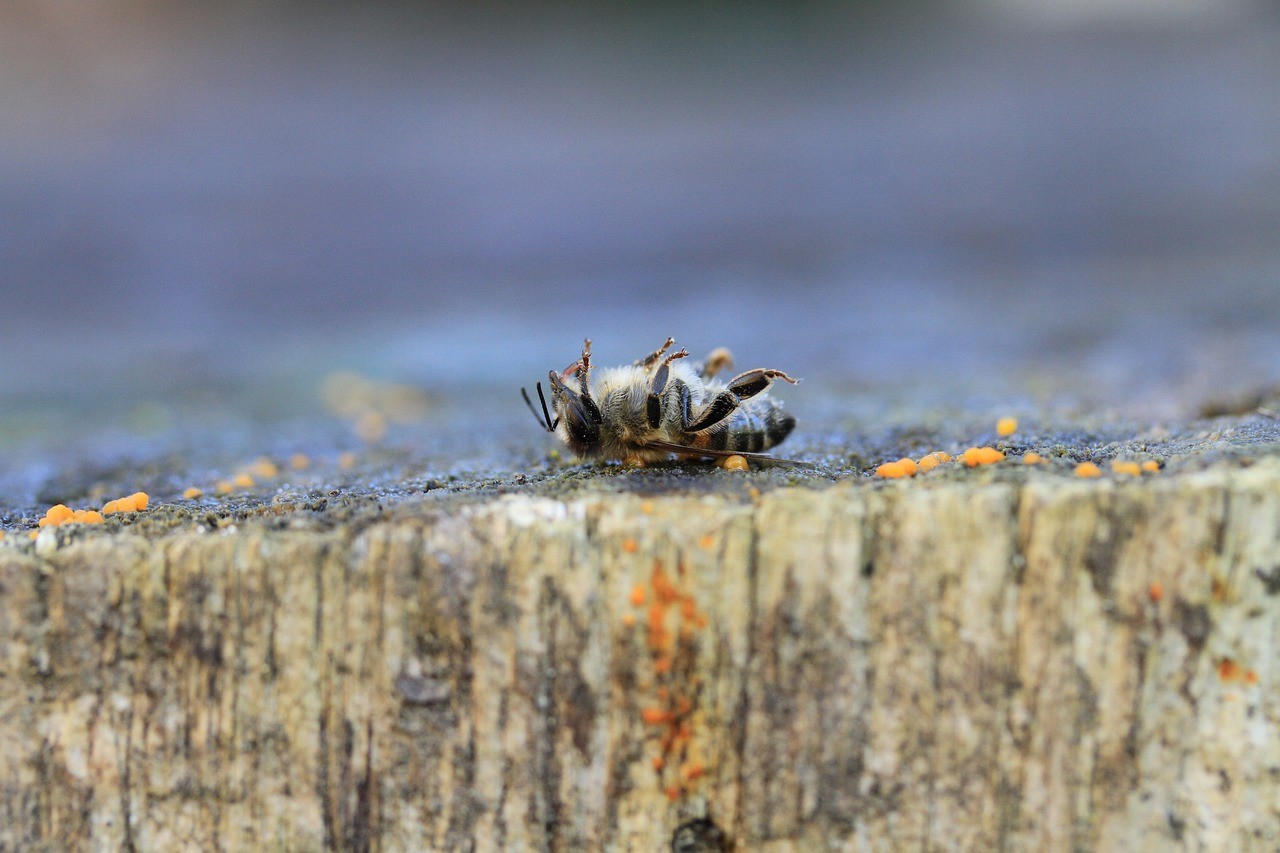Experiencing poisoned bees is a reality for most beekeepers who have been in the field for a while. When bees appear in large piles, dead in front of the hive, this is a sign that those bees have been poisoned. In the last several years, the buzz has been about the dreaded Colony Collapse Disorder, which is what many suspected was happening, but it would be quite a bit different. In Colony Collapse, the entire colony would disappear, leaving only traces of the hive's existence in honey and brood, and sometimes the queen stays too. Alternatively, bees absconding a beehive will take everything with them, leaving no remnants. Poisoned bees will look different, and beekeepers consider several things when determining the sudden death of many bees in their apiary.
The Difference Between CCD and Absconding
One identifying sign of absconding versus Colony Collapse Disorder (CCD) is that bees take everything with them and don't leave traces behind when they abscond. Bees absconding take existing resources in order to use them and re-establish in a new home. A beehive that is several years old will not likely abscond unless something substantial in its environment changes. Colony Collapse Disorder still has significant mystery around what happens, what causes it, and why bees don’t take their resources with them.
Identifying Bees When Poisoned
Mites are a well-known threat to existing bee hives and colonies. When mites destroy a hive, the dead bees are mainly inside the hive or on the bottom board. When bees have been poisoned, the dead bees are often in large piles in front of the hive. Experienced beekeepers share information and experiences, which allows other beekeepers to identify poisoned bees more easily. The most likely culprit to poisoned bees is someone in the area spraying pesticides, and the spray gets to the hive. Companies spraying mosquitoes in response to a virus is a one-off event, and poisoning the bees can be prevented through a few steps. Unfortunately, when someone in your area sprays, you don't necessarily have the heads-up to prepare.
If beekeepers find a large pile of dead bees in front of the hive, individual bees can be picked up and checked to see if the proboscis, or tongue, is sticking out. Beekeepers have found that poisoned bees, more often than not, have their tongues sticking out when poisoned. The next thing beekeepers do is consider if the poisoning occurred to individual bees (maybe they took pollen from a plant sprayed with pesticide) or if it is impacting the entire hive. Bees feeding on a bloom or plant with certain pesticides may last a while, and bees will continue to die off as more and more feed off the poisoned food source.
If beekeepers know of a planned spray, closing the hives the night before and covering them with a wet sheet can keep them cool and keep the hive safe during the spraying. Sheets or towels can be removed and washed, taking all the poisonous pesticides with them.
Beekeepers Provide Clean Pollen and Clean Water
At first signs of bee poisoning, it is likely from a pesticide spray that took place in the area where bees are foraging. One thing a beekeeper can do is provide clean food and water sources to try to help prevent other beehives from dying. Many times, the age and overall health of the hive when it is poisoned will determine if it survives, but small measures from beekeepers increase the chances. Pesticide use is rarely intentional to hurt bees and is usually a response to something that is damaging to crops or plants, like aphids. Unfortunately, sprays travel great distances and how and where they spread can't be controlled. The use of spray pesticides can result in a pile of dead bees.

Get help with your beehive or bee swarm removal! Call Today 760-224-3040 Or 951-265-8292!
One event can wipe out a large number of foraging bees. Still, prolonged pesticide exposure can be detrimental to the entire colony, so if you suspect this, provide clean sources to help the bees counter the effects of the poison. Poisoned bees may display shaking, behaving in disoriented or jerky spurts, and quivering. Beekeepers report that poisoned bees also have their tongues out when they die. Only beekeepers know the feeling of walking up to the hive and seeing a large pile of dead bees. It is heartbreaking. The best advice is to keep going, find ways to protect and shield hives from spraying and provide clean sources as they recover. Sharing information and bringing awareness to the effects of pesticide use may help those in your area be more mindful of when and what they use for pest control.
Whether you are a beekeeper, a bee enthusiast, or a property owner with a beehive concern, contact D-Tek for help with your needs, questions, and concerns. D-Tek is the best live bee removal company in San Diego County and is owned by a local beekeeper. D-Tek are experts in the field and can answer any questions about bees in your area.
Contact D-Tek today, call 760-224-3040 OR 951-265-8292.
